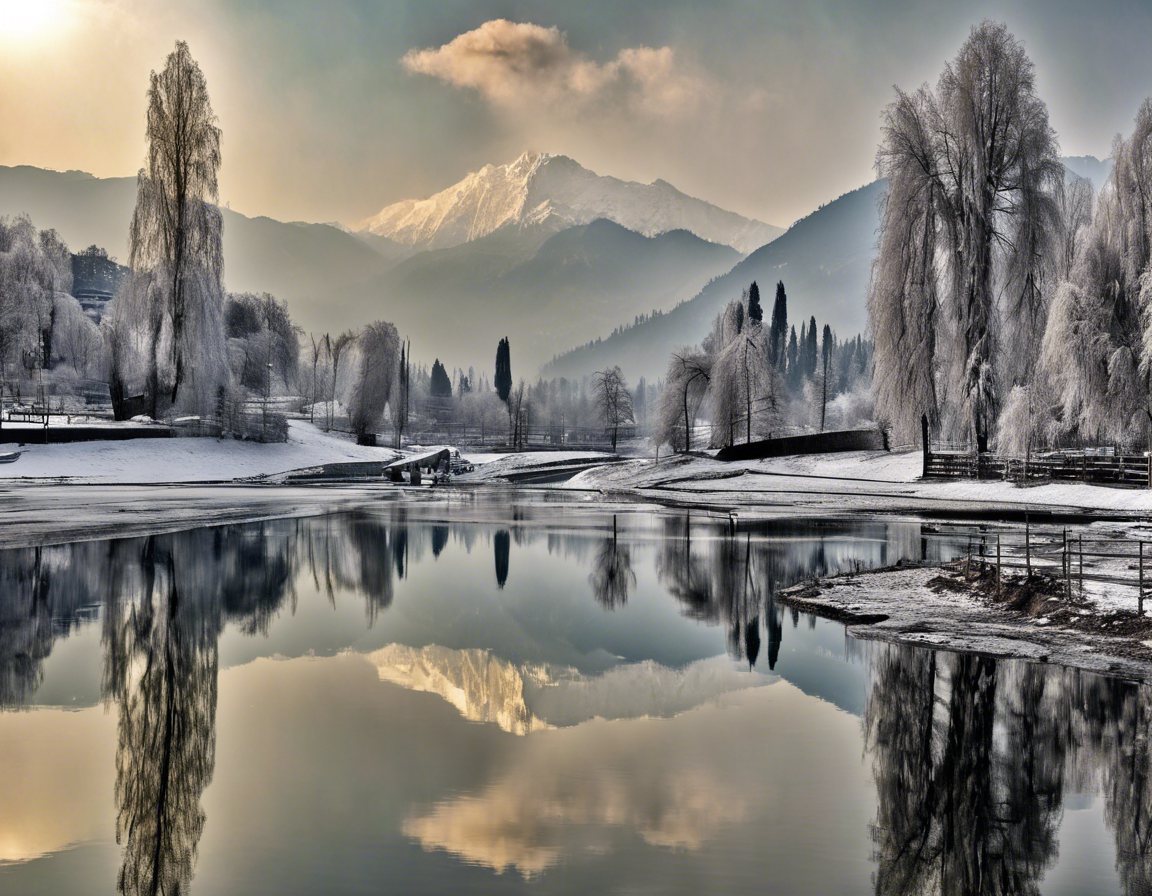The weather and temperature of a place play a pivotal role in determining the best time to visit and enjoy its offerings fully. When it comes to a destination as picturesque and captivating as Kashmir, understanding the climate variations becomes even more crucial for a memorable and pleasant experience.
Understanding the Seasons of Kashmir
Kashmir experiences four distinct seasons, each showcasing the valley in a different light:
Spring
Spring in Kashmir is a delightful season when the valley comes to life with blooming flowers, lush greenery, and pleasant weather. The temperature during spring ranges from 5°C to 23°C, making it an ideal time for nature walks, sightseeing, and enjoying the famed tulip gardens of Srinagar.
Summer
Summer in Kashmir extends from June to August, offering a cool and comfortable respite from the scorching heat prevalent in other parts of the country. The temperature during this time hovers between 15°C to 30°C, making it perfect for exploring the various tourist attractions, indulging in water sports on Dal Lake, and embarking on treks in the surrounding Himalayan ranges.
Autumn
Autumn graces Kashmir with stunning hues of red, yellow, and gold as the Chinar trees start changing their leaves. The temperature during autumn ranges from 10°C to 23°C, creating a mesmerizing backdrop for leisurely strolls along the Shikara-lined lakes or enjoying a cup of traditional Kahwa amidst the serene surroundings.
Winter
Winter blankets Kashmir in snow, transforming it into a winter wonderland that is nothing short of magical. The temperature during winter can plummet to -2°C to 10°C. Gulmarg and Pahalgam become popular destinations for skiing and snowboarding enthusiasts. The world-famous Gulmarg Gondola offers breathtaking views of the snow-clad peaks, making it a must-visit during this season.
Monsoon in Kashmir
Kashmir experiences a brief spell of monsoon from July to September, bringing with it light showers that add to the beauty of the valley. The temperature ranges from 15°C to 30°C, making it a refreshing time to witness the lush greenery and rejuvenate amidst nature.
Essential Packing Tips for Kashmir
When planning a trip to Kashmir, it is essential to pack accordingly to ensure comfort and convenience:
- Warm Clothing: Depending on the season of your visit, pack adequate warm clothing, including jackets, sweaters, and thermal wear for winters.
- Rain Gear: During monsoon, carry umbrellas and raincoats to stay dry during sudden showers.
- Sun Protection: Summers can be sunny, so don’t forget to pack sunscreen, sunglasses, and hats to protect yourself from harsh UV rays.
- Comfortable Footwear: Whether you plan on trekking or simply strolling around the markets, comfortable footwear is a must.
- Medications: If you have any specific medical conditions, carry an ample supply of medications as some remote areas may not have easy access to pharmacies.
Exploring Kashmir Responsibly
As you embark on your journey to Kashmir, it is essential to be a responsible traveler and respect the local culture and environment. Here are a few tips to ensure your visit leaves a positive impact:
- Respect Local Customs: Familiarize yourself with the local customs and traditions to avoid unintentionally offending the residents.
- Support Local Businesses: Opt for local homestays, eateries, and souvenir shops to bolster the local economy and promote sustainable tourism.
- Preserve the Environment: Dispose of waste responsibly and avoid littering to help in maintaining the pristine beauty of Kashmir for generations to come.
- Follow Guidelines: Adhere to any ecotourism guidelines provided by tour operators or authorities to minimize your ecological footprint.
FAQs about Weather and Temperature in Kashmir
- When is the best time to visit Kashmir?
-
The best time to visit Kashmir is during spring (March to May) and autumn (September to November) for pleasant weather and picturesque landscapes.
-
What should I wear in Kashmir during winters?
-
In winters, it is advisable to pack heavy woolens, jackets, gloves, and thermal wear to stay warm in the sub-zero temperatures.
-
Are there any specific precautions to take during monsoon in Kashmir?
-
During monsoon, carry rain gear, sturdy footwear, and be cautious of slippery paths while exploring the valley.
-
Can I witness snowfall in Kashmir during summers?
-
While snowfall is rare during summers, you can visit higher altitudes like Gulmarg for snow-related activities even in warmer months.
-
Is it safe to travel to Kashmir during winter due to heavy snowfall?
- With proper planning and checking weather conditions beforehand, traveling to Kashmir during winter is safe and offers unique snowbound experiences.
Conclusion
Understanding the weather and temperature variations of Kashmir is key to planning a well-rounded and fulfilling trip to this paradise on earth. Whether you prefer the vibrant blooms of spring, the pleasant summers, the colorful autumn hues, or the enchanting winter snowscapes, Kashmir has something to offer to every traveler throughout the year. By packing wisely, embracing responsible tourism practices, and immersing yourself in the local culture, your experience in Kashmir is sure to be nothing short of extraordinary.
